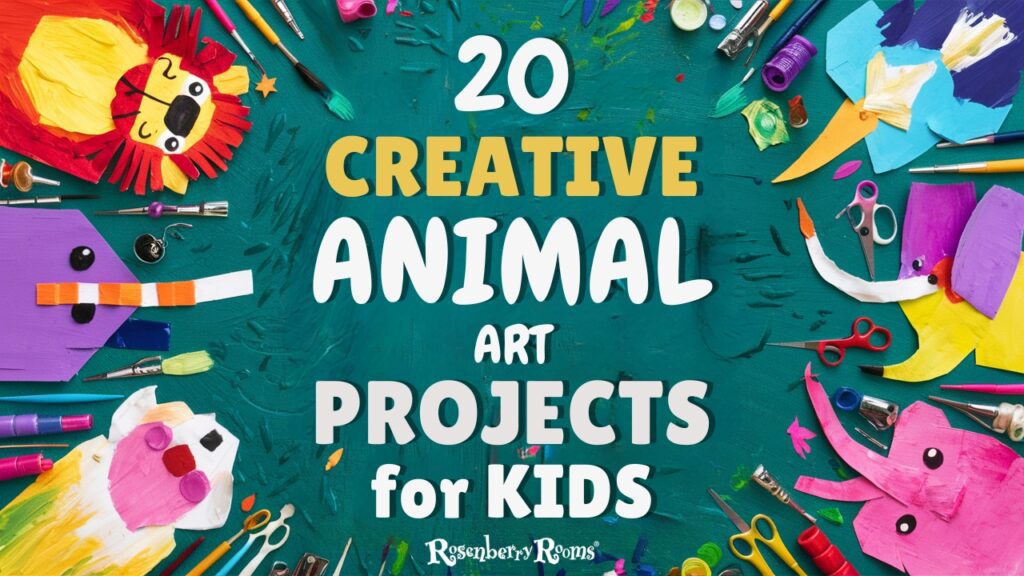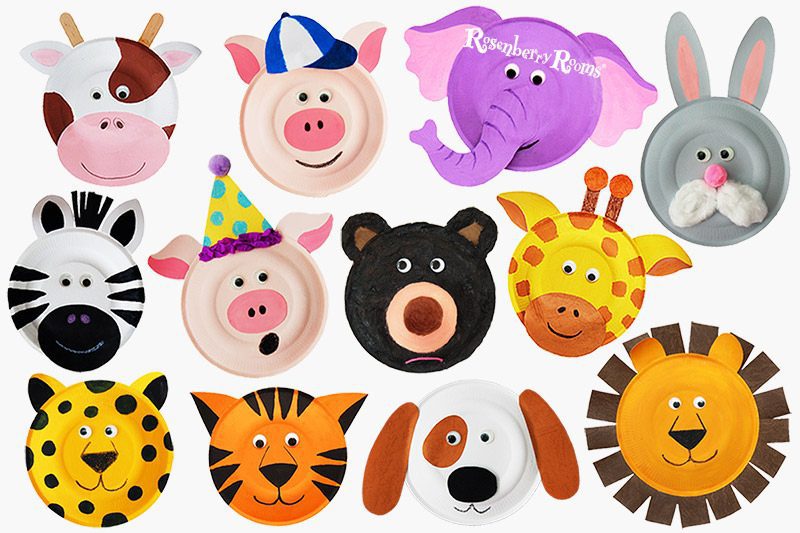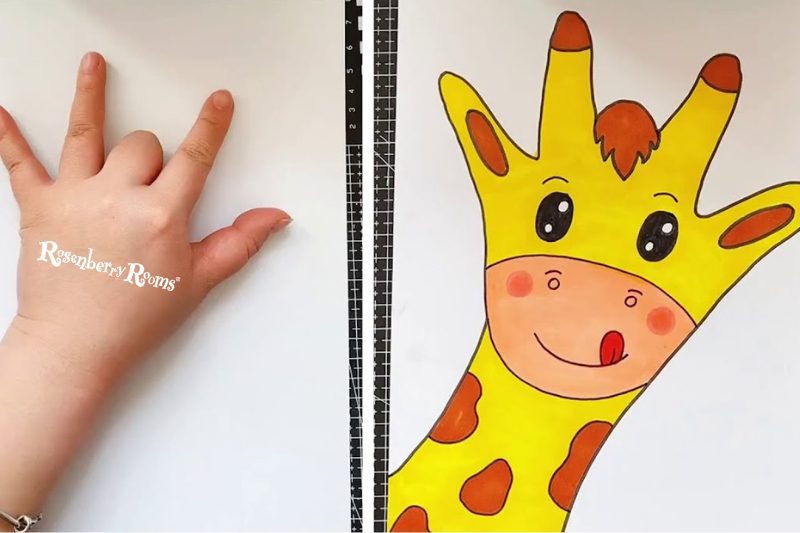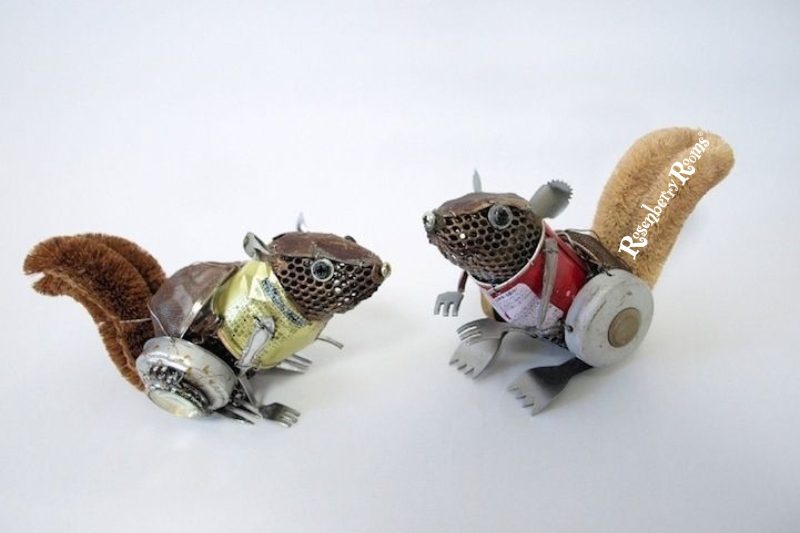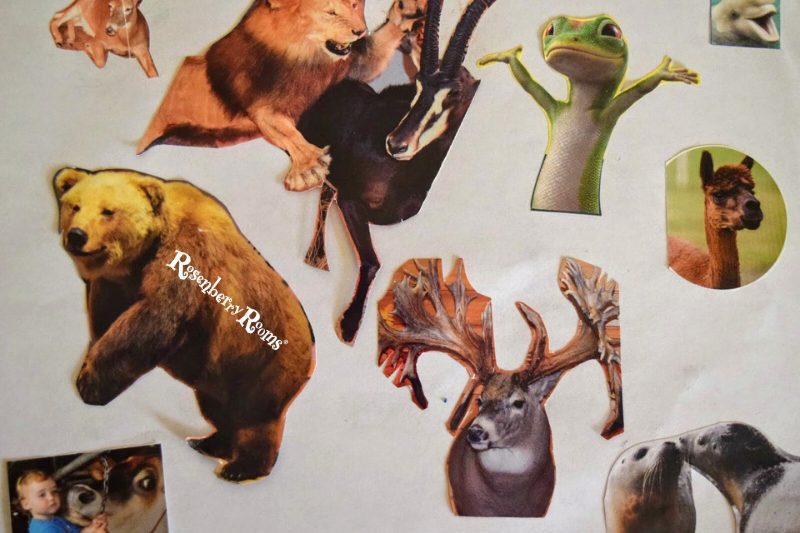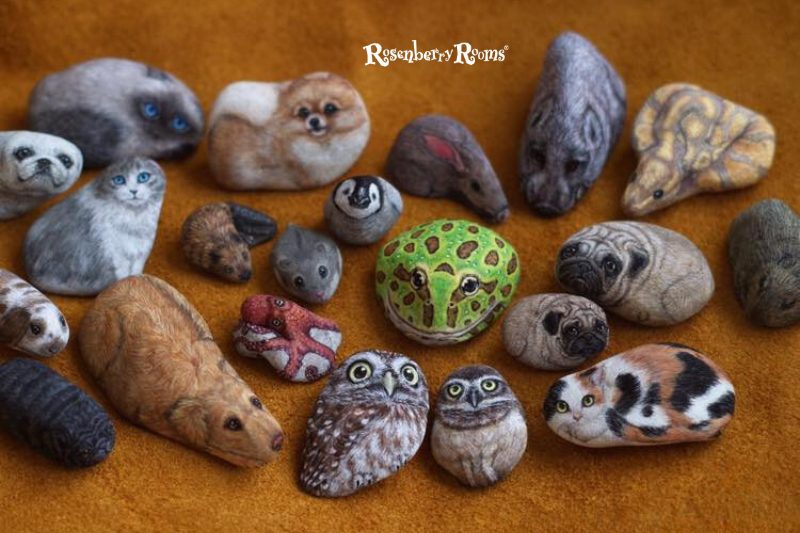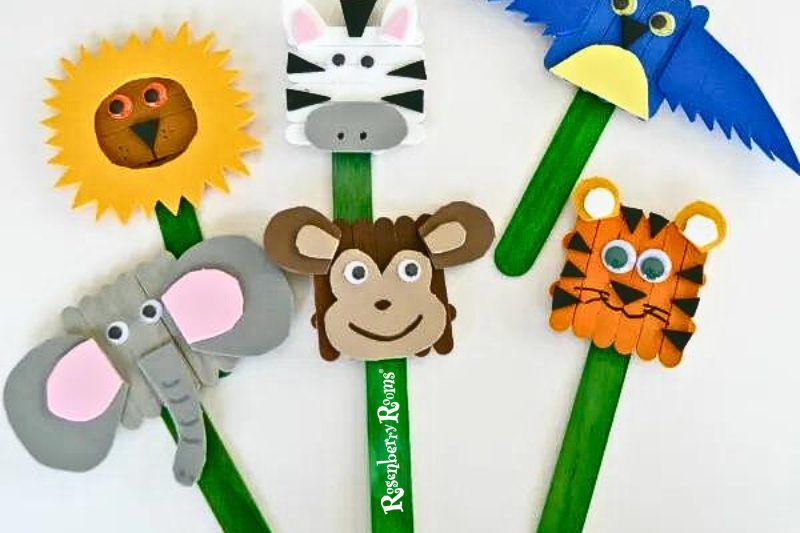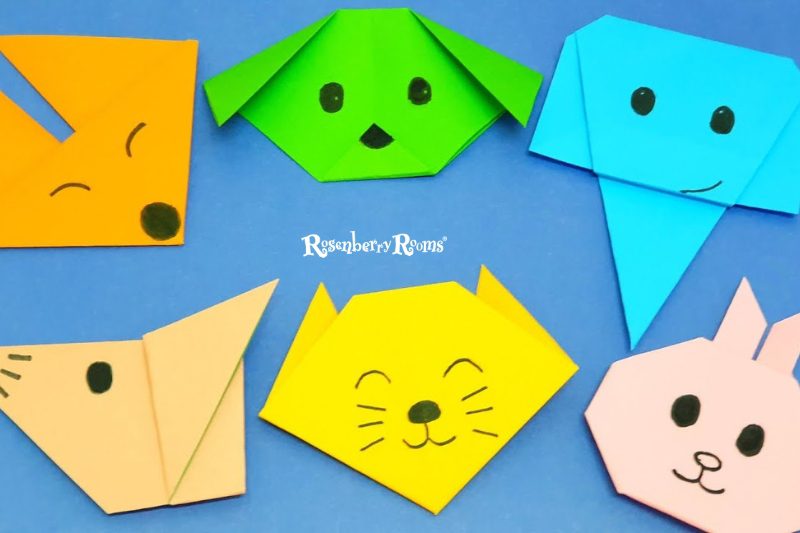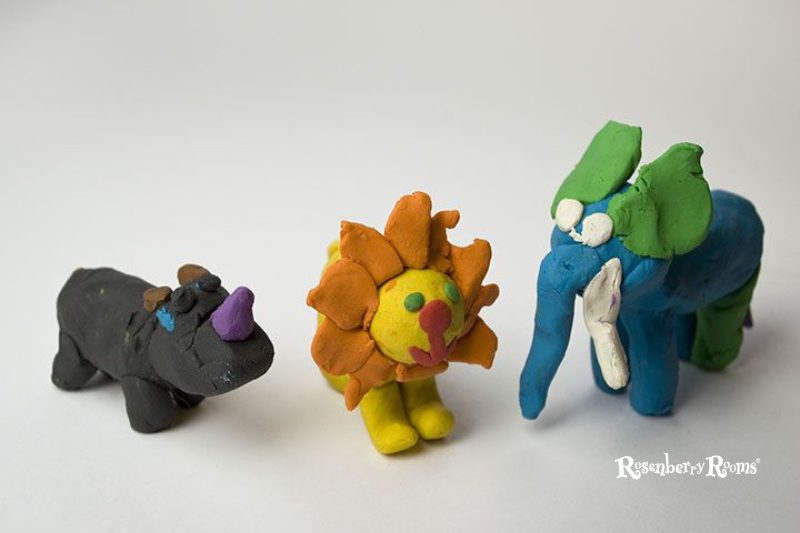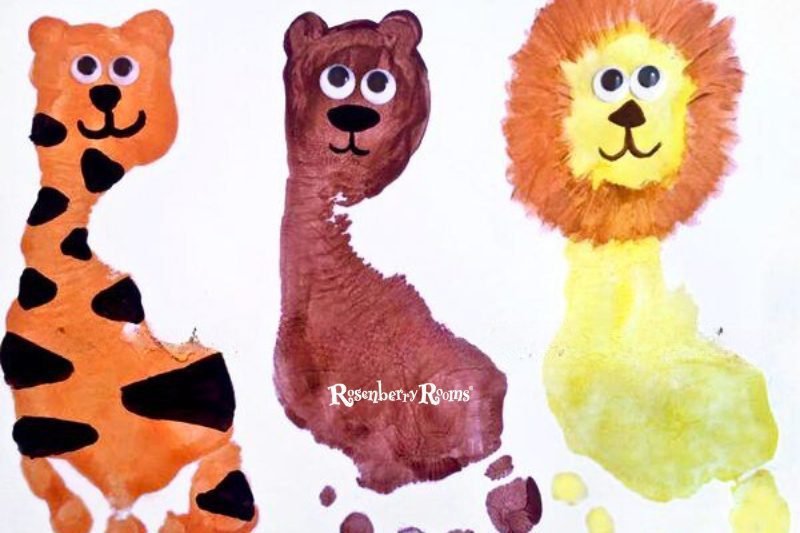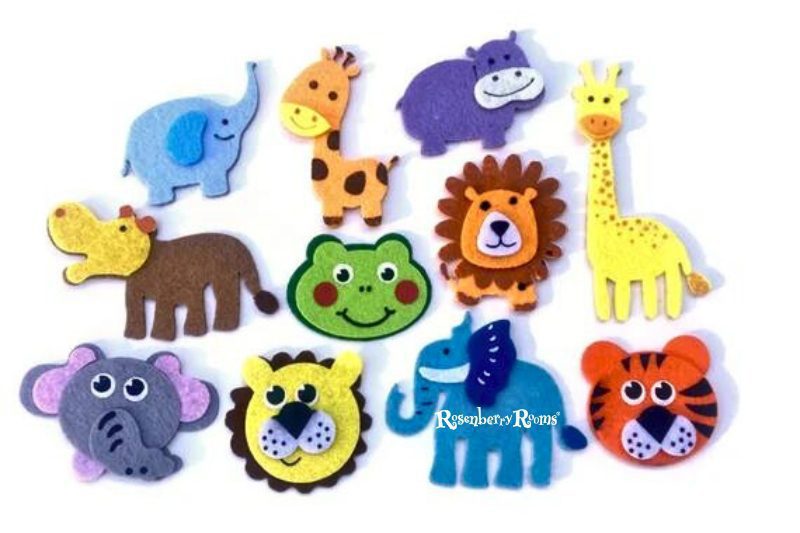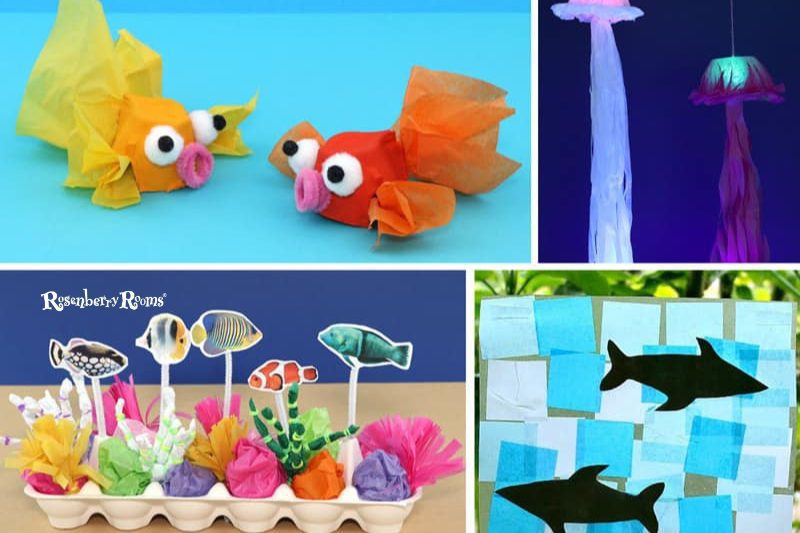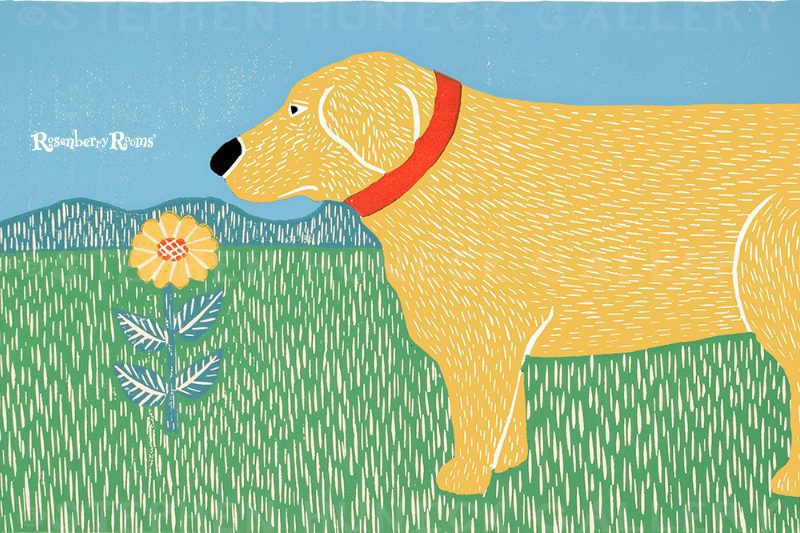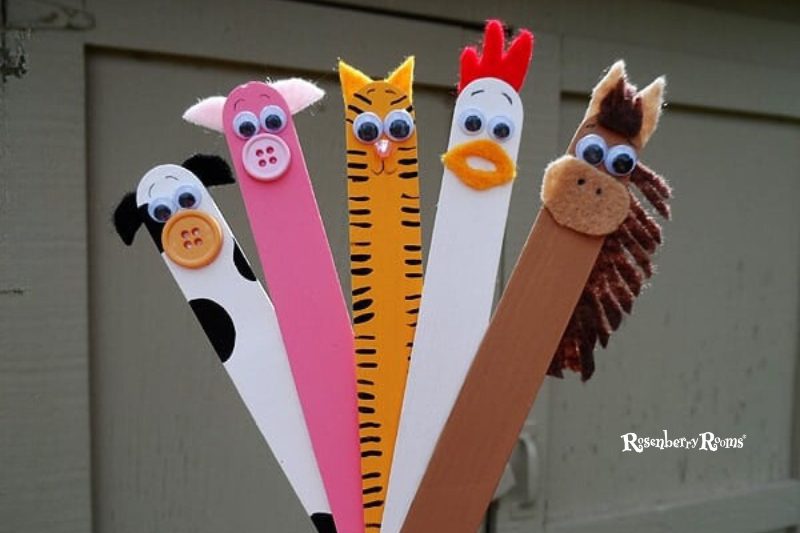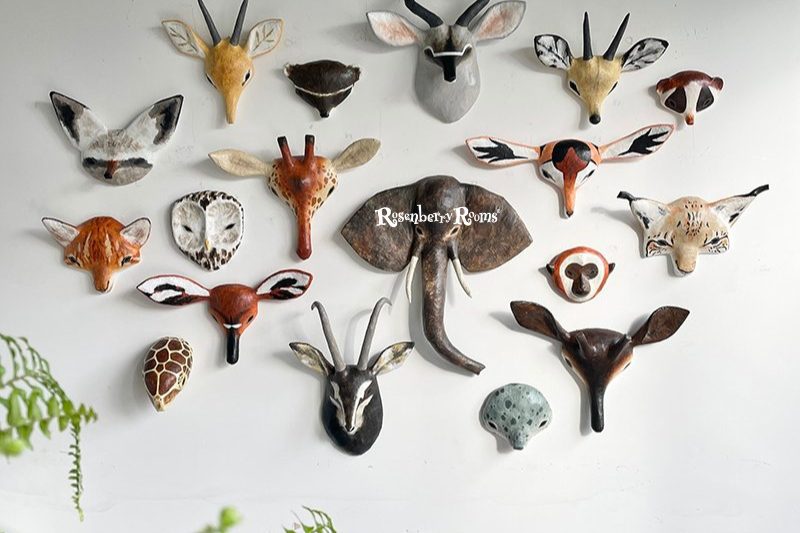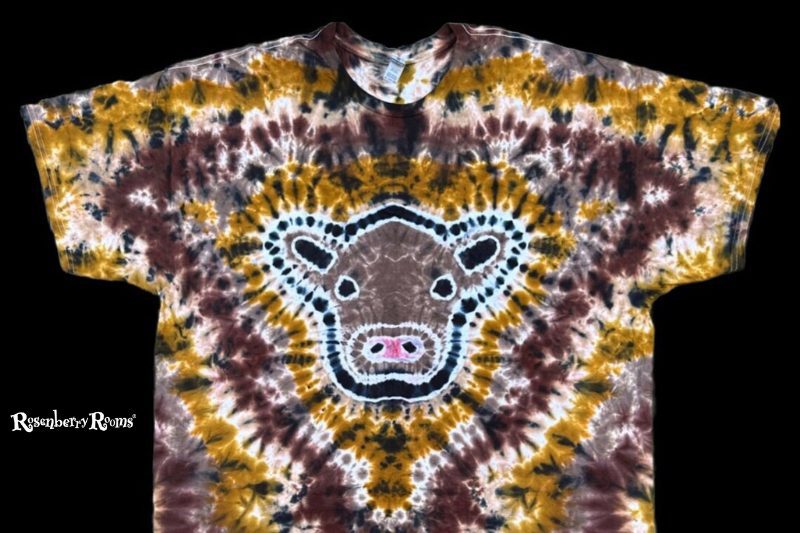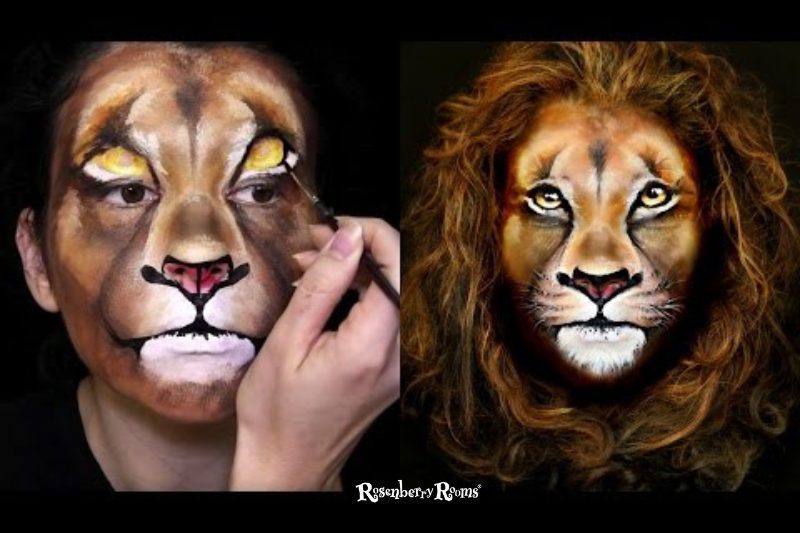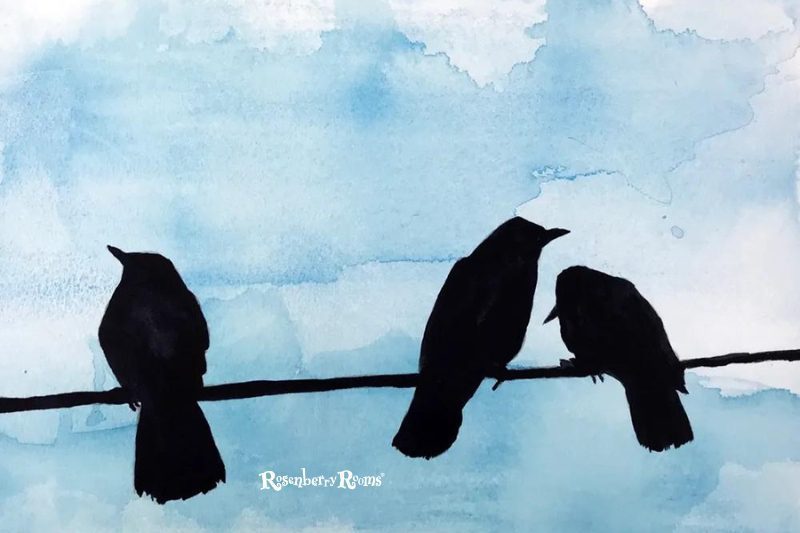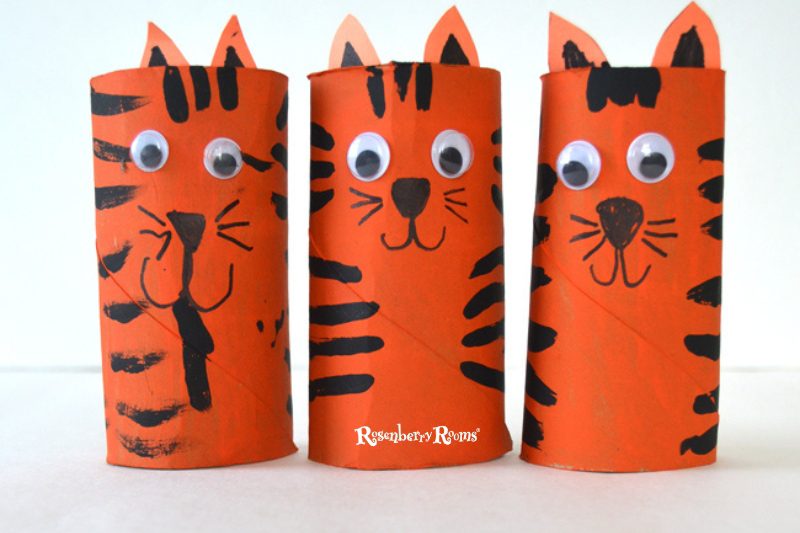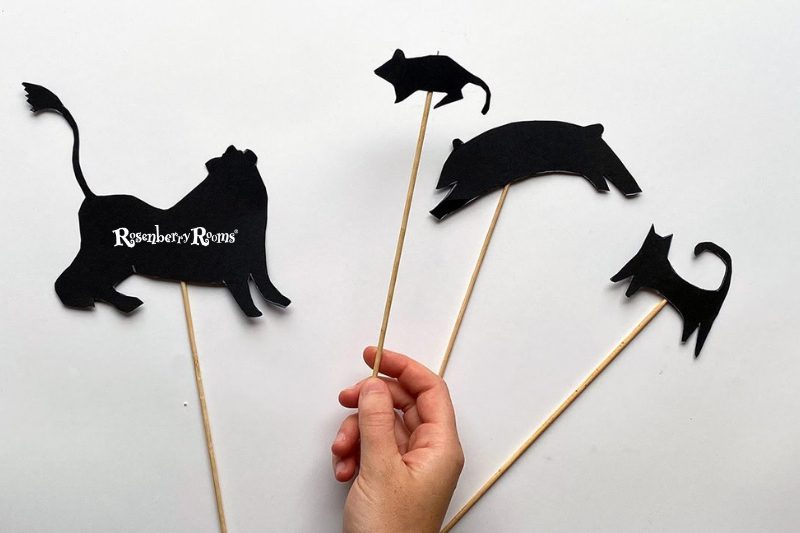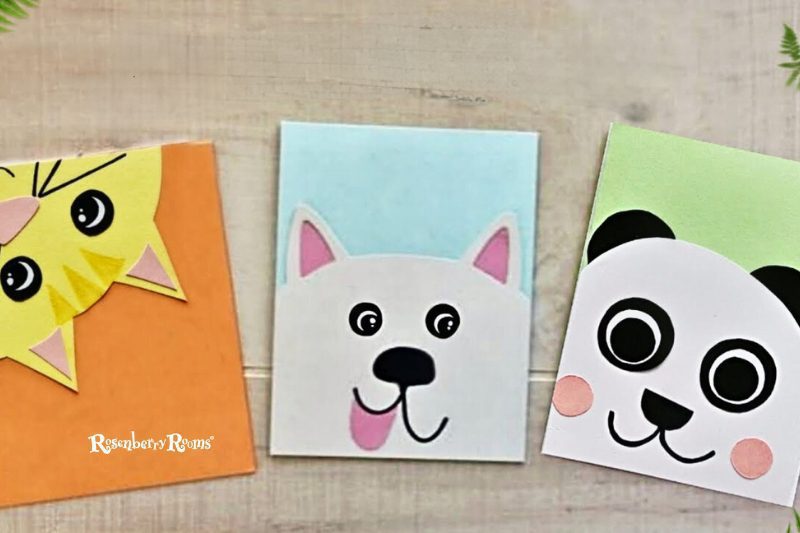One of my favorite things to do with kids is diving into some hands-on, messy, and fun art projects. There's something magical about watching their eyes light up as they bring their imaginations to life. So, if you're a parent, teacher, or caregiver looking to sprinkle a bit of creativity and excitement into your child's day, you've come to the right place. Today,
I'm sharing "20 creative animal art projects for kids" that are sure to inspire and entertain. From cuddly critters to wild safari beasts, these projects will not only keep little hands busy but also spark a love for arts and crafts. Trust me; you'll enjoy these activities just as much as they do! Let's jump right in and unleash our artistic wild side.
20 Creative Animal Art Projects for Kids
These projects are ideal for encouraging kids to tap into their creative side while also delivering a personal touch that store-bought cards simply can't match. It's a beautiful way for them to express themselves and brighten someone’s day.
1. Paper Plate Animal Masks
Creating paper plate animal masks is a fantastic way to dive into the world of crafts with your kids. These masks are not only easy to make but also offer endless possibilities for creativity.
Materials Needed:
- Paper plates
- Paints
- Markers
- String or elastic
- Scissors
- Glue
- Decorative items like feathers, glitter, and pom-poms
Instructions:
- Pick an Animal: Start by deciding which animal you want to create. Lions, tigers, and bears are always popular choices, but unicorns and dragons can be equally exciting.
- Prepare Your Plate: Cut out eye holes in the paper plate. This is best done by an adult to ensure safety.
- Paint and Decorate: Let your kids paint the plate in the colors of their chosen animal. Once the paint is dry, add any additional decorations like felt, feathers, or glitter.
- Add the String: Punch a hole on each side of the plate and thread through some string or elastic. This will allow your kids to wear their masks.
This project not only boosts kids' artistic skills but also sparks their imagination. Plus, there's something undeniably fun about running around as a wild animal!
2. Handprint Animal Art
Handprint animal art is a wonderful way to combine creativity with a personal touch. Kids love using their hands to make art, and this activity brilliantly transforms their handprints into cute animal designs.
Materials Needed:
- Washable paint
- Paintbrushes
- Construction paper
- Markers
Instructions:
- Choose Your Animal: Decide what animal you'd like to create. Popular options include fish, turkeys, and elephants.
- Prepare the Paint: Pour washable paint into a shallow dish or plate. Have your kid dip their hand into the paint, coating it generously.
- Make the Handprint: Carefully press the painted hand onto a piece of construction paper. Let it dry.
- Add Details: Once the handprint is dry, use markers to add details like eyes, legs, and other features that complete the animal design.
Not only does this activity get a little messy (in a good way!), but it also turns out adorable keepsakes you can treasure or gift to family members.
3. Recycled Material Animal Sculptures
Teaching kids the value of recycling while nurturing their creativity is a win-win. Recycled material animal sculptures let kids repurpose everyday household items into incredible works of art.
Materials Needed:
- Recyclable items like bottles, boxes, caps
- Glue or hot glue (adult supervision needed for hot glue)
- Paints
- Markers
- Decorative elements like fabric scraps and buttons
Instructions:
- Collect Materials: Start by gathering various recyclable items from around your home. Think plastic bottles, cardboard boxes, and bottle caps.
- Choose an Animal: Decide which animal you'd like to create. Penguins, pandas, and giraffes are fun and relatively simple options.
- Assemble the Sculpture: Use glue to attach the recyclable items together, forming the basic shape of your chosen animal.
- Decorate: Once the glue dries, paint and decorate your sculpture to bring it to life. Encourage the kids to get creative with the additional elements like fabric scraps and buttons.
4. Animal Collage
Do you have a stack of old magazines and leftover craft paper lying around the house? Perfect! Let’s dive into the world of animal collages. Not only is this project super fun, but it’s also a great way for kids to experiment with textures, colors, and patterns.
Materials Needed
- Various textured papers
- Old magazines
- Glue sticks
- Safety scissors
- Poster board or thick paper
Step-by-Step Guide
- Collect Materials: Begin by gathering all your textured papers and magazines. Let the kids choose different patterns and colors they find interesting.
- Cut Out Shapes: Help them cut out shapes that will form different parts of the animal. For example, circles for eyes, triangles for ears, and ovals for the body.
- Arrange and Glue: Arrange the cut-out shapes on a piece of poster board to form the animal. Once they’re happy with the design, let them glue the pieces in place.
- Add Details: Use markers or crayons to add any additional details like whiskers, spots, or fur lines.
This project isn’t just about creating something beautiful; it also encourages kids to think critically about how different elements come together to form a complete picture.
5. Rock Painting Animals
Who knew rocks could be transformed into adorable animals? This is a fantastic outdoor activity that combines a little adventure with creativity. Let’s dive into the nitty-gritty of rock painting animals.
Materials Needed
- Smooth rocks
- Acrylic paints
- Paintbrushes
- Outdoor-safe sealant
How to Get Started
- Find the Perfect Rocks: Take the kids on a nature walk to find smooth, flat rocks. Once you’re back home, wash the rocks thoroughly.
- Design Ideas: Decide what animals to create. Ladybugs, turtles, and snakes are excellent choices.
- Painting Time: Start with a base coat that reflects the animal's overall color. Once the base coat is dry, add details like eyes, patterns, or spots.
- Seal the Masterpiece: After the paint has fully dried, apply an outdoor-safe sealant to protect the artwork from the elements.
The satisfaction of turning an ordinary rock into a tiny piece of art is immense, and it’s an activity both fun and educational.
6. DIY Animal Puppets
Imaginations can run wild with DIY animal puppets. Whether it's a monkey, dog, or dragon, puppets offer endless storytelling possibilities. Let’s explore how to make some easy and entertaining animal puppet 🎨🦁
Materials Needed
- Socks or paper bags
- Felt or fabric scraps
- Glue
- Scissors
- Googly eyes
Step-by-Step Instructions
- Choose Your Base: Determine whether you’ll use socks or paper bags as the puppet base. Each offers its own unique charm.
- Cut Out Features: From your felt or fabric scraps, cut out the features of the animal such as ears, noses, and tongues.
- Assemble the Puppet: Glue the cut-out features onto the sock or paper bag. Add googly eyes for that extra touch of character.
- Let It Dry: Allow the glue to fully dry before playing with the puppet to avoid any mishaps.
- Time for a Show: Once dried, let the kids create stories and scenarios with their new animal friends.
Puppetry Tips
- Character Development: Encourage kids to think about their puppet’s personality. Is it a brave lion or a sneaky fox?
- Voices and Movement: Help them practice different voices and movements to bring their puppets to life.
7. Origami Animals
Origami is such a fascinating and timeless art form that kids find both exciting and educational. The beauty of origami lies in its simplicity—just a piece of paper and folds, yet it can transform into countless shapes.
Basic Origami Folds and Techniques
Before diving into making animals, it's essential to understand some basic origami folds. Start with simple folds like the valley fold and mountain fold. These fundamentals are the building blocks for more complex creations.
Step-by-Step Guides for Origami Animals
Here are a few easy-to-follow steps for crafting some classic origami animals:
- Crane:
- Instructions: Start with a square paper, fold it into a triangle and then again into a smaller triangle. Follow specific steps to create the wings, head, and tail.
- Benefits: Enhances precision and patience.
- Frog:
- Instructions: Begin with a rectangular paper. Numerous folds will form the body and legs, leading to a bouncy frog.
- Benefits: Encourages fine motor skills.
- Dog:
- Instructions: With a square piece of paper, simple folds create a dog's head with floppy ears.
- Benefits: Easy for beginners and quick to make.
Hand-Eye Coordination and Patience
Creating origami animals isn't just fun; it also helps kids develop hand-eye coordination and patience. This activity requires focus, yet the results are so rewarding, making it a perfect blend of challenge and enjoyment.
8. Clay or Playdough Animals
Working with clay or playdough is another fantastic way for kids to express their creativity. The tactile experience of molding shapes can be incredibly soothing and satisfying.
Homemade Playdough and Types of Clay
You don’t need to buy expensive materials. Here's a simple homemade playdough recipe:
Ingredients:
- 2 cups of flour
- 1 cup of salt
- 1 cup of water
- 1 tablespoon of vegetable oil
- Food coloring (optional)
Mix all the ingredients until smooth. You can add the food coloring to make it more fun.
Sculpting Ideas for Animals
Unleash the creativity by making various animal figures:
- Dinosaurs:
- How-to: Use different colored clays to form the body, legs, and spikes of a dinosaur.
- Advantages: Enhances creativity and muscle strength.
- Bunnies:
- How-to: Roll clay into balls for the body, head, and ears. Add tiny details like eyes and whiskers.
- Advantages: Improves detail-oriented skills.
- Birds:
- How-to: Create a small oval for the body and a pointed beak. Use different colors for feathers.
- Advantages: Perfect for teaching balance and symmetry.
Benefits of Molding and Shaping
Molding animals out of clay or playdough improves kids' fine motor skills and allows their imaginations to run wild. The end products are also fun toys to play with long after the sculpting is done.
9. Animal Footprint Art
Animal footprint art is a creative way to combine education and fun. Kids will learn about different animals and their tracks while creating beautiful pieces of artwork.
Using Sponges or Stamps
To start, gather some sponges or stamps shaped like animal footprints. If you can't find them in stores, DIY options are always a hit! Cut out shapes from sponges to mimic animal tracks.
Creating Forest or Jungle Scenes
Once you have your footprints ready, dip them in paint and stamp away. Here are some scene ideas:
- Forest Scene:
- Materials: Brown paper for the ground, green for trees, various colors for animal prints.
- Animals: Deer, rabbits, and birds.
- Process: Stamp footprints to show animals moving through the forest.
- Jungle Adventure:
- Materials: Green paper for foliage, bright colors for exotic animals.
- Animals: Tigers, monkeys, and parrots.
- Process: Use different sized stamps to show diverse species.
Learning About Different Habitats
As kids create these scenes, you can turn the activity into a mini-lesson about different habitats. Discuss where each animal lives and how their environment shapes their footprints. This is a great way to blend art and education seamlessly.
10. Felt Animal Crafts
Felt is one of those versatile materials that's perfect for kids' crafting. Not only is it colorful and easy to cut, but it's also soft and safe, making it great for little hands.
Materials Needed:
- Various colors of felt
- Scissors
- Glue or fabric glue
- Googly eyes
- Markers or fabric paint
Steps to Create Simple Felt Animals:
- Choose Your Animal: Start by deciding on which animal you want to create. Let's say you're making an owl.
- Cut Out Shapes: Trace and cut out the main shapes from the felt. For an owl, you’ll need a body, wings, eyes, beak, and feet.
- Assemble and Glue: Arrange the felt pieces and glue them together. Encourage the kids to play around with the shapes and layers before gluing to get everything just right.
- Add Details: Stick on googly eyes and use markers or fabric paints to add any fine details like feathers or fur patterns.
The beauty of felt crafts is the limitless possibilities. Whether it’s a fish, bear, or bird, kids can let their imaginations soar.
11. Tissue Paper Art Animals
Tissue paper art is another fantastic project that's simple yet offers so much creative potential. Its translucent quality and vibrant colors bring any animal to life in a unique way.
Materials Needed:
- Tissue paper in various colors
- Cardstock or construction paper
- Glue stick or diluted white glue
- Scissors
- Pencil
Steps to Create Tissue Paper Animals:
- Draw the Outline: On a piece of cardstock or construction paper, lightly draw the outline of the animal. You could go with a butterfly for a colorful project.
- Tear Tissue Paper: Tear the tissue paper into small pieces. This is a fun step that kids will enjoy.
- Fill In the Outline: Apply glue within the drawn outline and stick on pieces of tissue paper. Overlapping the pieces gives a beautiful, textured effect.
- Add Final Touches: Once the tissue paper is fully dry, kids can add any final touches like drawing antennae for the butterfly or eyes for a fish.
This activity enhances fine motor skills and introduces young artists to concepts like layering and color blending.
12. Nature Walk and Animal Art
Combining a nature walk with an art project is a wonderful way to merge physical activity with creativity. This project encourages kids to explore the outdoors and use natural materials in their artwork.
Getting Started:
- Plan a Walk: Choose a nearby park, hiking trail, or even your backyard for a nature walk.
- Collect Natural Materials: During the walk, gather natural items like leaves, twigs, stones, and flowers. Make sure to discuss the importance of collecting responsibly and leaving enough for nature.
- Sketch Ideas: Before starting the craft, let kids sketch out ideas for animals using the natural materials they collected. For instance, leaves can be feathers for a bird, and twigs can become the legs of an insect.
Creating the Art:
- Arrange the Pieces: Lay out the natural materials on a piece of paper or cardboard to form the animal shape. Encourage the kids to experiment with different arrangements.
- Glue Everything Down: Once happy with the layout, glue the pieces onto the paper. Kids can add more details with markers or paint if they’d like.
13. Popsicle Stick Animals
Popsicle sticks are incredibly versatile and make for some fantastic animal crafts. With just a few simple materials, your kids can create a zoo's worth of creatures!
Materials Needed:
- Popsicle sticks
- Googly eyes
- Markers or paints
- Glue
- Craft foam or construction paper
Instructions:
- Gather Your Supplies: Grab a bunch of popsicle sticks, googly eyes, markers or paints, glue, and some craft foam or construction paper.
- Choose Your Animal: Decide whether you want to make a cat, alligator, or even a flamingo.
- Assemble the Animal: Use the popsicle sticks as the animal's body. Paint or color them as you like.
- Add Details: Glue on googly eyes, draw on noses, and cut out ears or other features from craft foam or construction paper.
Fun Tips:
- Mix and Match Colors: Let the kids paint the popsicle sticks with bright, vibrant colors.
- Use Different Sizes: Incorporate varying sizes of popsicle sticks for different parts of the body, such as legs and arms.
- Be Creative: Don't just stick to common pets; encourage kids to create rare animals or even imagined monsters!
Popsicle stick animals are awesome because they allow creativity to flow freely, and the results are often adorably charming.
14. Paper Mache Animal Heads
One of the more ambitious projects, creating paper mache animal heads, can be both thrilling and instructive. This project will definitely leave your kids feeling accomplished.
Materials Needed:
- Balloons
- Newspaper or tissue paper
- Flour and water (for paper mache paste)
- Paints
- Brushes
- Cardboard (optional for extra features like ears or horns)
Instructions:
- Prepare the Paste: Mix flour and water to a smooth, paste-like consistency.
- Blow Up the Balloon: This will serve as the base of your animal head.
- Apply the Newspaper Strips: Dip small strips of newspaper into the paste and layer them onto the balloon. Make sure to cover the entire surface.
- Let It Dry: Allow the first layer to dry completely before adding another one. For durability, you might want to add three to four layers in total.
- Pop the Balloon: Once all layers are completely dry, pop the balloon and remove it.
- Add Details: Glue on cardboard ears or horns as required.
- Paint: Finally, paint your creation to resemble your chosen animal.
Fun Tips:
- Use Tissue Paper for Smoother Finish: For a smoother surface, you can layer tissue paper on the outermost layer.
- Incorporate Different Shapes: For animals with pronounced features, use additional balloons or water bottles.
- Create a Series: Make a series of heads to show off different animals, like a jungle theme or farm theme.
This project does take some time but is well worth it for the impressive results and the skills learned along the way.
15. Animal-Themed Tie-Dye Shirts
Who doesn't love tie-dye? Adding an animal twist to this classic summer activity makes it even more exciting and creative.
Materials Needed:
- Plain white t-shirts
- Tie-dye kits (available at most craft stores)
- Rubber bands
- Plastic gloves
- Animal stencils or masking tape
Instructions:
- Prepare the T-Shirt: Lay the shirt flat and use rubber bands to create the traditional tie-dye patterns (spirals, sections, etc.).
- Create Animal Patterns: Use stencils or masking tape to outline animal prints such as zebra stripes or butterfly wings.
- Apply the Dye: While wearing plastic gloves, apply the dye according to the kit instructions.
- Set the Dye: Follow the dye kit’s instructions for setting the colors, usually involving letting the shirt sit for a specified period.
- Rinse and Reveal: Rinse out the excess dye, remove the rubber bands and stencils, and then reveal your design.
Fun Tips:
- Mix Colors: Encourage kids to use multiple colors to make the animal prints pop.
- Layer Techniques: Combine traditional tie-dye patterns with animal stencils for a unique look.
- Add Details: Use fabric paint to add finer details like whiskers or eyes once the dye is set.
16. Animal Face Painting
Materials You'll Need
- Safe, skin-friendly face paints
- Brushes and sponges
- Mirror
- Water bowl for cleaning brushes
Who doesn't love a bit of face paint? It's a fun way to let kids transform into their favorite animals and dive into imaginative play. The magic of animal face painting lies in its simplicity and boundless creativity.
Step-by-Step Guide
- Prep Your Materials: Make sure you have all your face paints, brushes, and sponges laid out. Have a mirror handy so kids can see their transformation.
- Choose an Animal: Let your child pick the animal they want to become. Popular choices are tigers, cats, and butterflies.
- Outline the Face: Start with a light outline using a sponge or brush. This is where your kid's face starts turning into an animal mask.
- Fill in the Colors: Use bold, vibrant colors to fill in. Tigers get their stripes, cats get their whiskers, and butterflies get their beautiful wings.
- Details: Add little details like whiskers, spots, or outlines to make the face pop.
Tips for Fun and Safety
- Always make sure the face paint is non-toxic and safe for children's skin.
- Have wet wipes or a damp cloth handy for quick clean-ups.
- Encourage the kids to make animal sounds to get into character!
17. Watercolor Animal Silhouettes
Materials You'll Need
- Watercolor paints
- Brushes
- Watercolor paper
- Black construction paper
- Scissors and glue
Creating watercolor animal silhouettes is a fantastic way to combine painting with cutting skills. The end result is always mesmerizing and frame-worthy.
Step-by-Step Guide
- Paint the Background: Start by getting your watercolor paper and painting a beautiful background. Think sunsets, starry nights, or forest scenes. Let your child mix colors and watch them blend.
- Set Aside to Dry: Allow the masterpiece to dry completely.
- Create Silhouettes: While the background dries, draw and cut out animal shapes from the black construction paper. Animals like birds, wolves, or deer work wonderfully.
- Paste the Silhouettes: Once the painting is dry, glue the black silhouettes onto the watercolor background.
- Final Touches: Smooth out any bubbles and let everything dry thoroughly before displaying.
Benefits and Fun
- This project helps kids understand positive and negative space in art.
- The combination of painting and cutting enhances both fine motor and creative skills.
- It's a less-messy way to paint, especially if you cover your workspace properly.
18. Cardboard Tube Zoo Animals
Materials You'll Need
- Cardboard tubes (toilet paper or paper towel rolls)
- Paints and brushes
- Construction paper
- Glue and scissors
- Googly eyes, markers, and embellishments
Don't throw those cardboard tubes away! They're perfect for creating a mini zoo of cardboard tube zoo animals. This is a fantastic way to recycle and get crafty at the same time.
Step-by-Step Guide
- Paint the Tubes: Start by painting your cardboard tubes in base colors for different animals. For example, yellow for lions, black and white for zebras, or brown for monkeys.
- Add Features: Use construction paper, googly eyes, and markers to add faces, ears, and other features. Cut out shapes for ears, noses, or manes and glue them on.
- Detailing: Add any additional details like stripes, spots, or tails using paints or markers.
- Assemble Your Zoo: Line up your completed animals to display your own homemade zoo.
Creative Tips
- Encourage kids to use their imaginations—unicorns and dragons fit nicely in this zoo, too!
- Use different-sized tubes for different animals to add diversity to your zoo.
- Engaging in this project teaches kids about different animals and allows for a fun toy that they've created themselves.
19. Shadow Puppets
Creating shadow puppets is an exciting way to blend art and storytelling, and kids absolutely love it. This project is perfect for those rainy afternoons or cozy evenings when you want to dive into a bit of crafting fun.
Materials Needed
- Paper or Cardstock
- Scissors
- Popsicle Sticks or Thin Rods
- Glue or Tape
- A Light Source (flashlight or desk lamp)
Instructions
- Draw Animal Shapes: Begin by drawing simple outlines of animals on paper or cardstock. Think dogs, birds, or even mythical creatures like dragons.
- Cut Them Out: Carefully cut out the animal shapes. This part can involve a bit of intricate scissor work, so it’s a great exercise in developing fine motor skills.
- Attach to Sticks: Use glue or tape to affix the cut-out animals to popsicle sticks or thin rods. Ensure they are securely attached so they don’t wobble during the puppet show.
- Set Up Your Stage: Position a light source, like a flashlight or desk lamp, to cast a shadow on a blank wall or a white sheet.
- Let the Show Begin: Hold your puppets in front of the light, and watch as animal silhouettes come to life on the wall. Encourage kids to create their own stories and act them out using their shadow puppets.
This craft not only fosters creativity but also offers a delightful way for kids to explore the art of storytelling. They’ll treasure these simple yet magical creatures and the stories they bring to life.
20. Animal-Themed Greeting Cards
Another wonderful project is making animal-themed greeting cards. These handcrafted cards are perfect for birthdays, holidays, or just to say “hello” to a friend or family member. Plus, it gives kids a chance to practice writing and artistic skills in a heartfelt way.
Materials Needed
- Blank Greeting Cards or Construction Paper
- Markers, Crayons, or Colored Pencils
- Stamps and Ink Pads
- Glue and Scissors
- Animal Stickers or Cutouts
- Glitter and Other Embellishments (optional)
Instructions
- Fold the Card: If you’re starting with construction paper, fold it in half to create a card shape. Blank greeting cards from the store also work perfectly.
- Design the Cover: Decide on which animal will be the star of your card. Draw, color, or use stickers to create a cute animal on the front cover. You might make a fuzzy bear, a fluttering butterfly, or even an entire underwater scene.
- Add Details: Use markers, crayons, or colored pencils to add extra details. Maybe draw a forest around your bear or some colorful flowers for your butterfly.
- Stamp and Embellish: If you have stamps and ink pads, add some animal prints or themed designs. Feel free to sprinkle some glitter or add other fun embellishments for extra flair.
- Write a Message: Inside the card, help kids write a friendly message. They can say “Happy Birthday," “Get Well Soon,” or simply “Thinking of You.”
- Personal Touch: Encourage kids to add their signature and perhaps a small drawing inside the card to make it truly unique.
Dive into these animal art projects, and you'll find a treasure trove of joy and creativity. Watching kids express their imagination through various mediums, from recycled materials to face paint, is incredibly rewarding. These activities not only enhance their artistic skills but also teach valuable lessons about nature, animals, and the environment.
It's a fantastic way to spend quality time together, foster their creativity, and have a lot of fun in the process. Whether it's a rainy day indoors or a sunny afternoon in the backyard, these 20 creative animal art projects for kids are sure to keep their spirits high and their minds engaged. Enjoy the adventure and make some wonderful memories along the way!
